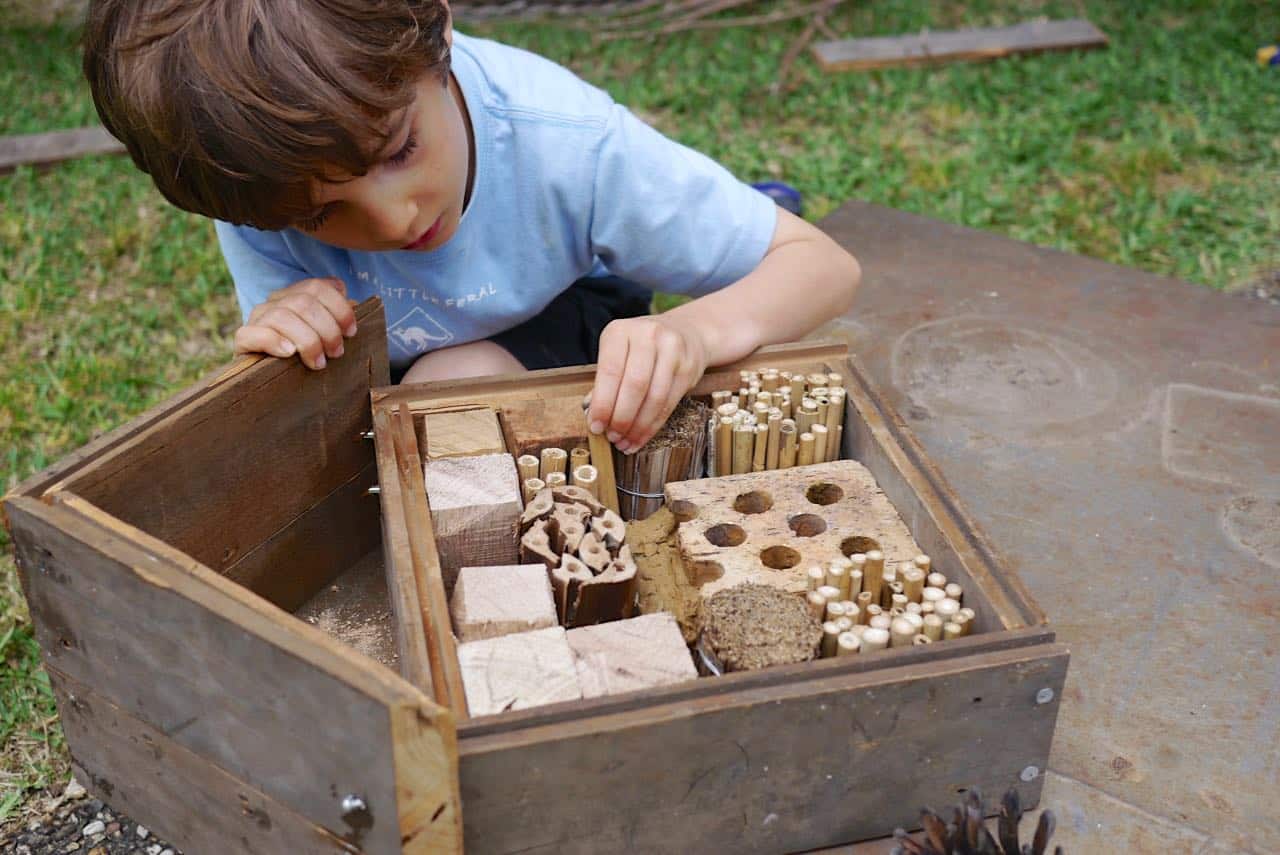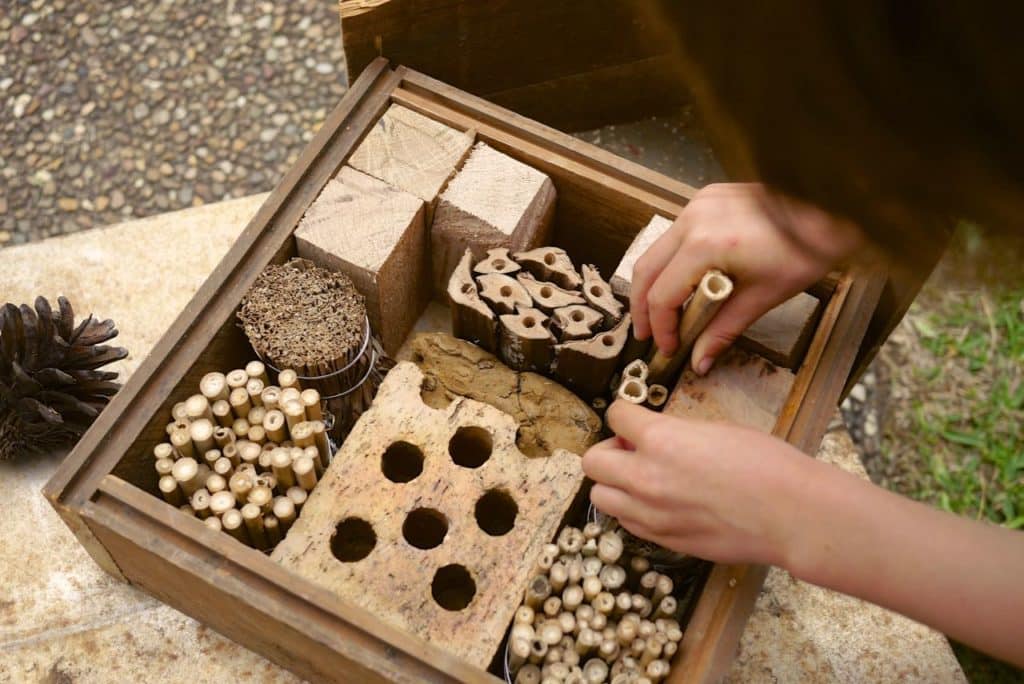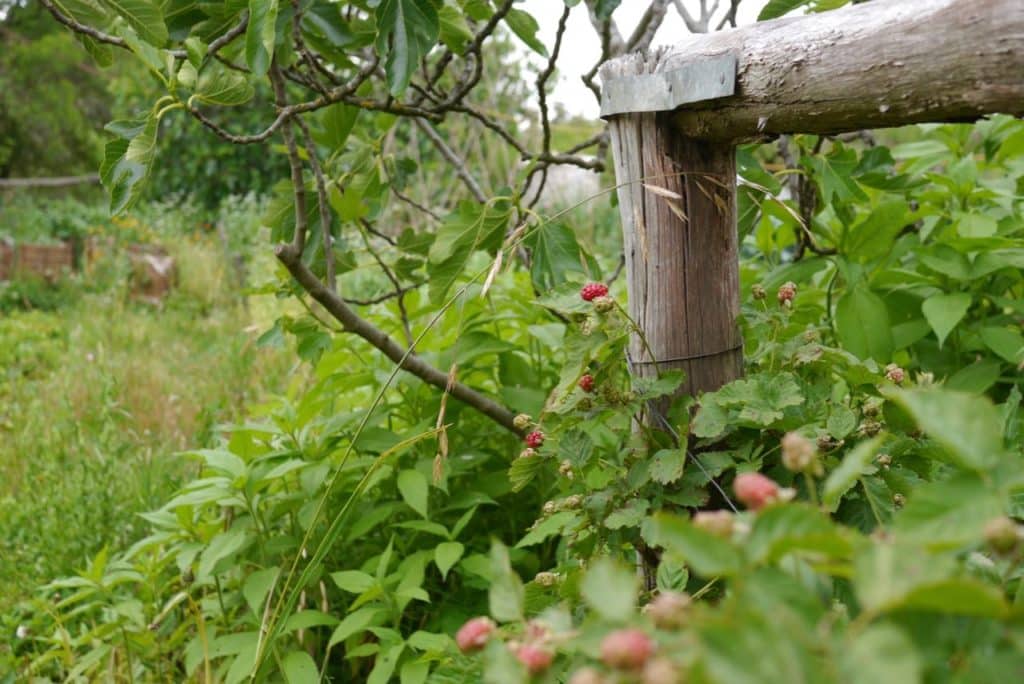

For a resilient garden, diversity is key. But diversity is not just about planting different kinds of veggies!
You really want to encourage diverse garden visitors to you as well – pollinators, good bugs and visitors like small birds and lizards.
By supporting diversity in your backyard ecosystem, you are doing many awesome things. The pollination of your vegetable garden will increase, for one.
And then there’s all the garden helpers that you want to attract – ‘good bugs’ and small birds to help with pest problems, and maybe even lizards and other critters native to your area, to help control things like slugs and snails.
This article is part of a lesson in our Permaculture Living online course – a 12 week program, to build your household resilience while engaging in everyday climate action.
Make sure you’re subscribed to our newsletter to get all the goodness, straight to your inbox, each week.
Why diversity matters
By actively increasing your garden’s diversity, you’re also supporting your wider ecosystem – which we are all a part of, each and every day, whether we realise it or not.
How can you make the place where you live healthier and more resilient – for you, your community AND for all your garden visitors – with simple steps and DIY techniques? Let’s have a look…


Who are we trying to attract here?
Pollinators
For both your vegetable garden’s abundance, and the resilience of your patch (and ecosystem) in general. Bees of all types, some wasps, butterflies, different types of native flies and even small birds and other animals can all be important pollinators where you live.
Small birds
Small birds like wrens, robins and fantails can play an important role in your garden’s health – managing grubs and caterpillars aplenty – but they need specific habitat to really move in and do their job well at your place
Good bugs
These are the bugs that predate on the ‘bad bugs’ (well, bad for your vegetable patch, usually – not inherently bad in their personality or anything)… certain types of ladybirds, wasps, beetles and nematodes are fabulous garden helpers when it comes to controlling mites, aphids and more – but they need the right conditions to help you out.
Other garden visitors
This will depend where you are – in Southern Australia, blue-tongued lizards eat slugs and snails in gardens, frogs help keep gardens healthy as they eat small slimy things, paper wasps predate on cabbage moth caterpillars, and more. Find a local guide and figure out what lives near you.


Basic DIY strategies to increase diversity
All these strategies are either cheap or free to do, and make great all-in family projects.
Getting kids involved in stewarding diversity (and getting to make stuff) is a great way to increase their understanding of their ecosystem
Water
Water is life! Having a body of water, large or small, in your garden helps out everyone who lives or visits there, and attracts them to stay. From bees to birds to frogs, and everything in between.
You might start off with just a dish of water with a few rocks in it so bees and such can crawl out if they get stuck, or a bird bath construction, or even a garden pond, if that suits your context.
If you ‘go the whole pond’ – consider planting some edible water plants in there too… stack those functions! Home-grown water chestnuts, anyone?
A safe bed for the night
If you’d like your garden visitors to stay awhile, or move in for good, make them a home. This might be in the form of an insect hotel – which can be as simple or as grand as you like, according to your resources.
Don’t forget some mud in there too, which is the preferred burrowing material for some helpful pollinators – you might get some blue banded bees moving in…
But even a can filled with sticks, raised 1m off the ground and secured out of the weather, is a good start – these provide habitat for carpenter bees and predatory solitary wasps to move into.
- Making an Air Bee n Bee (insect hotel)
Habitat
Surrounding your garden with habitat means more visitors like small birds moving in – sometimes for good. Wrens for example – they love a thorny thicket bush – where they can retreat from predators and then pop back out into your garden.
Planting dense, low habitat plants around your garden will see an increase in these sorts of garden helpers. Have a look at what edible spiny bushes would grow well at your place, too, to obtain a yield as well as a habitat – juniper? Sloes?
And what about your local lizards? Skinks help manage pest levels, and so do larger lizards like blue-tongues – thought your lizard visitors will depend where you live. Creating a lizard habitat in your garden is an awesome kids activity – grab some hollow sticks or logs, nice sun-bathing rocks, and get making…
A note about pets – for maximum garden diversity, especially for things like lizards, you may want to think about excluding pets from your growing area – so your garden visitors don’t get eaten, or scared off.
- Creating a lizard lounge
- Birds in backyards – planting guides
- Backyard Buddies – great kids resources on ALL the critters
Good food
The more delicious food there is in your garden, the more diversity you will attract. And by food, we don’t mean tomatoes, necessarily. Think like a pollinator!
Pollinating bugs, bees and butterflies love dumbbell shaped flowers like queen anne’s lace, fennel flowers and such. Many bees are attracted to blue flowers – so how about planting more borage, or blue salvias, lavender and nigella?
Diversity begets more diversity, in a garden. So the more flowers and pollinator-food you can pack in around the edges, the better off your garden’s pollination will be – as well as your pollinators.
- Planting guide for Australian pollinators – PDF
- Wild Pollinator Count – a yearly event of citizen science

Tip: Do your research before removing any ‘pest’ from your home
A note on removing seemingly problematic species in your garden… always do a little research first!
Take paper wasps, for example. Obviously if their nest is next to your front door, that’s not ideal. But if they’re down the side of the shed, out of the way…. Did you know they predate on cabbage moth caterpillars? That’s very good news for your brassicas.
The same goes for aphids or any other bugs – see if you can ID them first! Some aphids predate on other aphids… so you want to keep those ones. Similarly with nematodes and many other small garden critters. Research, and learn, and then make your decision about what to do.
Not all friendships are straight forward – you’ll find garden friends in the most unlikely of places.
Got questions? Here’s our live Q&A
This Q&A was held live on our Facebook page, on Friday May 22. Here’s a some good resources to get you started….
- In relation to edible water gardens check out Nick Romanowski’s book ‘Edible Water Gardens’
- In relation to a good bug attracting mix you can buy Beneficial Insect Seed Mix from Green Harvest
- In relation to organic strategies for red scale control (and lots of other things!) check out Green Harvest resources
- And a great resource to ID Australian frogs is the Australian Museum FrogID Project

Finally –
By taking small steps to increase your garden’s diversity, you are also actively strengthening your wider ecosystem for everyone, and everything that lives in it. We are all connected – from nematode to tomato to wren to mountain.
What you do in your backyard matters, and can help create abundance that stretches far beyond your back fence. Good luck deciding what you will do first xx













My favourite are hoverflies. I love their metallic little bodies
I have yet to research this interesting little flyer who likes to hover around my roses. I figure it is a friend as I can’t observe any damage to the plant/flowers (yes – flowers! In the middle of Winter, Strange year weatherwise.)
This is really appreciated that you have presented this data over here, I love all the information shared. It will be very helpful to understand the content on creating a resilient garden with pollinators good bugs lizards and more . Indeed a great post to share!! Loved it…